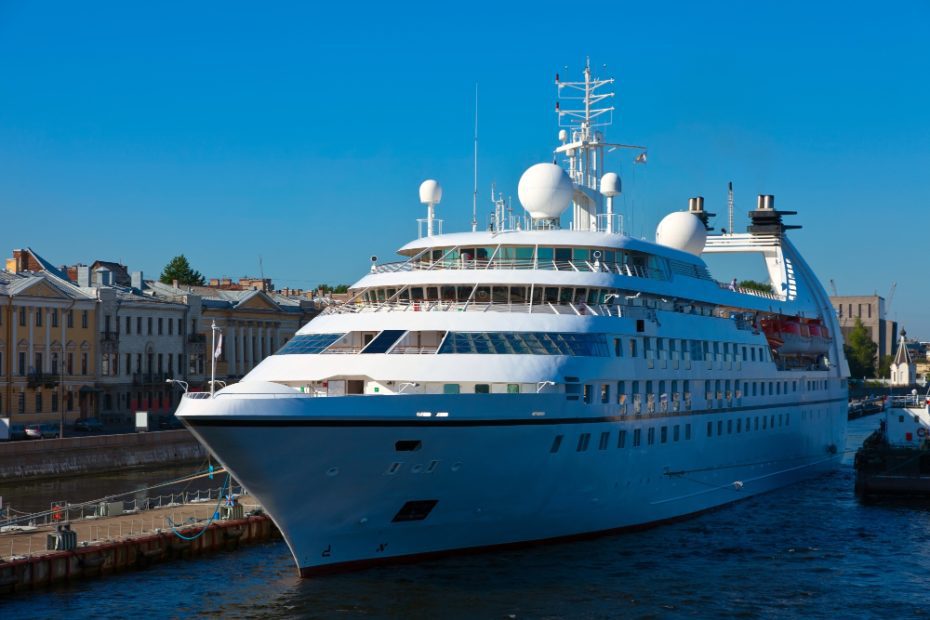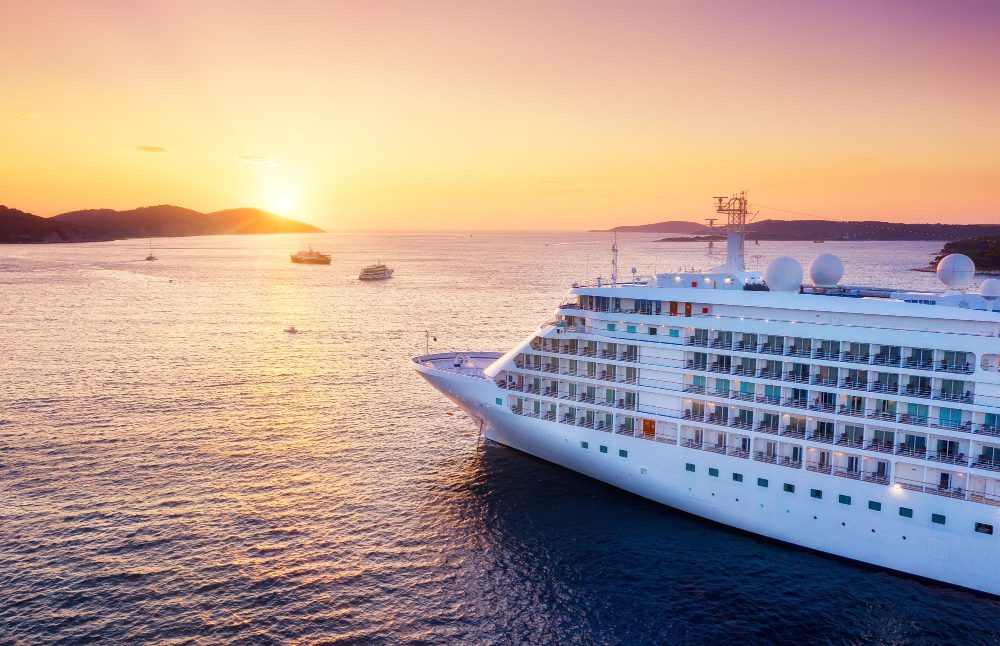Are cruise ships the biggest polluters?
When it comes to environmental concerns, one industry that often comes under scrutiny is the cruise ship industry. With their massive size and thousands of passengers on board, many people wonder if cruise ships are indeed the biggest polluters.
The Impact of Cruise Ships on Air Quality
Cruise ships are known for emitting large amounts of air pollution, particularly when it comes to sulfur dioxide (SO2) emissions. This is mainly due to the heavy fuel oil burned by these ships, which contains high levels of sulfur. In fact, according to a report by Transport & Environment, the world’s largest cruise ships can emit as much SO2 as 13 million cars in a day.
In addition to SO2, cruise ships also release nitrogen oxides (NOx) and particulate matter into the air. These pollutants can contribute to respiratory and cardiovascular problems, especially for those living in coastal areas near ports where cruise ships dock.
The Impact of Cruise Ships on Water Quality
Cruise ships have a significant impact on water quality, primarily through the discharge of wastewater and sewage. Although regulations have been put in place to reduce the amount of harmful substances released into the ocean, the sheer volume of waste produced by these ships remains a concern. This waste contains chemicals, pathogens, and other contaminants that can harm marine life and ecosystems.
Another major concern is the release of ballast water, which is used to stabilize the ship. Ballast water often contains invasive species, which can be introduced to new environments and disrupt native ecosystems. Efforts have been made to regulate ballast water discharge, but the risk of introducing invasive species through cruise ships remains.
The Cruise Industry’s Response
The cruise industry is not oblivious to these environmental concerns and has taken steps to mitigate its impact. Some cruise lines have invested in cleaner technologies and alternative fuels to reduce air pollution. Others have implemented advanced wastewater treatment systems to minimize the discharge of harmful substances into the ocean.
However, critics argue that these measures are not enough and that more needs to be done to address the environmental impact of cruise ships. They believe that stricter regulations and enforcement are necessary to ensure that the industry operates in a more sustainable and responsible manner.
“The cruise industry must take a comprehensive approach to reducing its environmental footprint. This includes investing in cleaner technologies, adopting stricter regulations, and prioritizing sustainability in all aspects of operations,” says environmental activist Jane Doe.
The Role of Individual Passengers
While cruise lines bear significant responsibility for reducing their environmental impact, individual passengers also play a role. Simple actions such as conserving water, properly disposing of waste, and being mindful of the marine environment can make a difference.
It is also important for consumers to choose cruise lines that prioritize sustainability and environmental stewardship. By supporting companies that have a genuine commitment to minimizing their ecological footprint, passengers can contribute to positive change within the industry.
Is Cruising worse than flying?
The Pros of Cruising
The cruise experience offers a unique way to travel, with several advantages over flying. One of the main benefits is the ability to unpack once and visit multiple destinations without the hassle of checking in and out of hotels. Cruises also offer a wide range of onboard activities, entertainment options, and dining experiences, providing a complete vacation package.
Another advantage of cruising is the opportunity to enjoy stunning ocean views and relax on deck while sailing between ports. Plus, many cruise ships have luxurious amenities like pools, spas, and fitness centers, adding to the overall vacation experience. Additionally, cruises often include organized excursions at each port, allowing passengers to explore the local attractions with ease.
The Cons of Cruising
However, there are some drawbacks to cruising when compared to flying. One notable disadvantage is the longer travel time. While flying allows you to reach your destination quickly, cruises can take several days or even weeks, depending on the itinerary. This extended travel time may not be ideal for those with limited vacation days or those who prefer to spend more time at their destination.
Another potential downside is the risk of seasickness. While modern cruise ships are designed with stabilizers to reduce motion sickness, some individuals may still experience discomfort. It’s important to consider whether you are prone to seasickness before booking a cruise.
The Pros of Flying
On the other hand, flying has its own set of advantages. One of the major benefits of air travel is the speed and efficiency of reaching your destination. With airports located worldwide and numerous flight options, flying allows you to cover long distances in a fraction of the time compared to cruising.
Flying also offers more flexibility in terms of destination choices. While cruises typically follow set itineraries, flying allows you to explore a wider range of locations, including remote destinations that may not be accessible by sea.
The Cons of Flying
However, flying also has its downsides. One significant disadvantage is the potential for flight delays and cancellations, which can disrupt travel plans and cause stress. Additionally, the security procedures and long queues at airports can be time-consuming and tedious.
Another concern is the environmental impact of air travel. Flying contributes significantly to carbon emissions, whereas cruising can be a more environmentally friendly alternative, especially with the use of newer, greener technologies in ship design.
In conclusion, whether cruising or flying is worse depends on personal preferences and priorities. Cruising offers a leisurely and all-inclusive vacation experience, while flying provides speed and flexibility. Consider factors such as travel time, comfort, destination options, and environmental impact when deciding which mode of transportation suits your needs best.
Do Cruise Ships Pollute More Than Airplanes?
Cruise ships and airplanes are both popular choices for travelers to explore new destinations. However, there is an ongoing debate about which mode of transportation has a greater environmental impact in terms of pollution. Let’s delve into the comparison between cruise ships and airplanes to determine if cruise ships pollute more than airplanes.
Fuel Consumption
When it comes to fuel efficiency, airplanes have a slight advantage over cruise ships. Modern aircraft engines are designed to be more fuel-efficient compared to the engines used in cruise ships. Additionally, airplanes are constantly striving to improve their fuel consumption by using advanced technology and lighter materials.
On the other hand, cruise ships run on heavy fuel oil, which emits high levels of pollutants such as sulfur oxide (SOx), nitrogen oxide (NOx), and particulate matter (PM). However, it’s important to note that cruise ships have made substantial improvements in recent years, with newer vessels implementing advanced emission reduction technologies.
Emissions Comparison
While airplanes have better fuel efficiency, they release most of their emissions at higher altitudes where they can have a more significant impact on the atmosphere. In contrast, cruise ships emit pollutants closer to land, which can have a direct effect on coastal regions and port cities.
According to a study conducted by the International Council on Clean Transportation (ICCT), cruise ship emissions in port areas can be up to several hundred times higher than those from nearby onshore sources, including cars and trucks.
Waste Management
Cruise ships generate a significant amount of waste, including sewage, graywater, and solid waste. While some cruise lines have implemented advanced waste management systems, improper practices can still lead to environmental damage.
On the other hand, airplanes have regulated waste management systems in place to handle human waste, food waste, and other types of waste generated during flights. These systems are designed to minimize environmental impact and ensure compliance with aviation regulations.
How many gallons of fuel does it take to fill up a cruise ship?
Introduction
As one of the largest and most luxurious modes of transportation, cruise ships require enormous amounts of fuel to operate. The question of how many gallons of fuel it takes to fill up a cruise ship is a fascinating one, as it sheds light on the energy consumption and environmental impact of these floating cities.
Fuel Types and Efficiency
Cruise ships typically run on heavy fuel oil, which is a byproduct of the refining process. These fuels are known for their high energy content, allowing them to power the ship’s engines and generate electricity. However, due to environmental concerns, cruise lines are increasingly adopting cleaner fuel alternatives, such as liquefied natural gas (LNG) or marine diesel oil.
Factors Affecting Fuel Consumption
The amount of fuel required to fill up a cruise ship can vary depending on several factors:
- Size of the ship: Larger cruise ships have greater fuel storage capacities and usually require more fuel to fill up.
- Distance and duration of the voyage: Longer journeys consume more fuel compared to shorter trips.
- Ship design and efficiency: Modern cruise ships are designed to be more fuel-efficient through innovations like streamlined hulls and advanced propulsion systems.
Quantifying Fuel Consumption
Calculating the exact number of gallons required to fill up a cruise ship is challenging, as it depends on various factors. However, we can provide a general estimate based on average fuel consumption rates.
A typical large cruise ship can consume around 100-150 metric tons of fuel per day. To put this into perspective, one metric ton of fuel is equivalent to approximately 317 gallons. Therefore, a cruise ship might require around 31,700 to 47,550 gallons of fuel per day.
Environmental Impact
The massive fuel consumption of cruise ships raises concerns about their impact on the environment. The emissions from burning fossil fuels contribute to air pollution and climate change. To mitigate these effects, cruise lines are investing in cleaner technologies, such as exhaust gas cleaning systems (scrubbers) and shore power connections at ports.
How far does a cruise ship go on a gallon of fuel?
The fuel efficiency of cruise ships
Cruise ships are massive vessels that require significant amounts of fuel to operate. However, they have made significant strides in recent years to improve their fuel efficiency. Modern cruise ships typically use a combination of diesel engines, gas turbines, and electric propulsion systems to minimize fuel consumption. The average cruise ship can travel around 30 feet per gallon of fuel.
Factors influencing fuel consumption
Several factors influence how far a cruise ship can go on a gallon of fuel. Some of the key factors include the ship’s size, weight, speed, weather conditions, and the efficiency of its engine systems. Generally, larger ships tend to have higher fuel consumption, while newer ships with advanced propulsion technologies are more efficient.
Fuel conservation measures
Cruise lines are taking proactive measures to reduce their environmental impact and minimize fuel consumption. These measures include optimizing ship designs, using energy-efficient lighting and appliances onboard, employing advanced waste heat recovery systems, and implementing speed reduction strategies. By adopting these practices, cruise ships can lower their fuel consumption and emissions significantly.
The impact of alternative fuels
The cruise industry has also been exploring alternative fuel options to reduce their reliance on traditional fossil fuels. Some cruise lines have started using liquefied natural gas (LNG) as a cleaner-burning fuel source. LNG-powered cruise ships can reduce greenhouse gas emissions by up to 20%. Furthermore, research is underway to develop hydrogen fuel cell technology for marine applications, which could further minimize environmental impact.
An illustration of fuel consumption
Let’s put the fuel consumption of cruise ships into perspective. Suppose a cruise ship has a fuel capacity of 1 million gallons and consumes 30 feet per gallon. It would be able to travel a staggering 30 million feet or approximately 5,682 miles on that fuel. To put that into context, this is roughly the distance from Miami to Anchorage, Alaska.
What kind of fuel do cruise ships use?
Introduction
Cruise ships are known for their luxury and extravagant facilities, but have you ever wondered what powers these massive vessels? Unlike cars or airplanes, cruise ships require a significant amount of fuel to operate. Let’s explore the various types of fuels used by cruise ships and their impact on the environment.
Fuel Types
Most cruise ships primarily rely on heavy fuel oil (HFO) as their main source of energy. HFO is derived from crude oil and is highly viscous, making it suitable for engines with low-speed combustion. However, HFO has raised concerns due to its high sulfur content, resulting in increased air pollution and negative effects on human health.
Environmental Concerns
The environmental impact of cruise ship emissions has sparked global attention in recent years. The combustion of HFO releases sulfur dioxide (SO2), nitrogen oxides (NOx), and particulate matter, contributing to air pollution and climate change. Additionally, the release of untreated wastewater, sewage, and oil contamination from cruise ships pose a threat to marine ecosystems.
Regulations and Alternatives
In response to these concerns, various regulations have been introduced to control cruise ship emissions. The International Maritime Organization (IMO) has set limits on sulfur content in fuel, resulting in the adoption of alternative fuels such as low-sulfur marine gas oil (LS-MGO). LNG (liquefied natural gas) is another promising option as it significantly reduces sulfur and particulate matter emissions.
Environmental Initiatives
Many cruise lines are actively investing in eco-friendly technologies and initiatives to reduce their environmental footprint. Some are retrofitting their ships to utilize shore power, which allows them to connect to the electrical grid while in port, reducing emissions during idle periods. Others are exploring the use of advanced air pollution control systems and implementing waste management practices to minimize pollution.
Impact on Travelers
As travelers become increasingly concerned about environmental issues, cruise lines are also taking steps to meet their expectations. Some companies have introduced carbon offset programs, where passengers can contribute towards offsetting the carbon emissions generated by their cruise. Additionally, eco-friendly excursions and sustainable practices onboard are becoming more popular among environmentally conscious travelers.
Conclusion
While both cruise ships and airplanes contribute to pollution, each has its unique impact on the environment. It is crucial for both industries to continue investing in technology and sustainable practices to minimize their carbon footprint.
In the words of David Suzuki, “We can’t just consume our way to a more sustainable world”.
Ultimately, as travelers, we can also play a part by choosing eco-friendly transportation options, supporting companies committed to reducing their environmental impact, and advocating for stricter regulations that promote sustainability.
Filling up a cruise ship with fuel requires an enormous quantity of fuel, often in the range of tens of thousands of gallons per day. As the industry continues to prioritize sustainability, cruise lines are exploring alternative fuel sources and adopting energy-efficient technologies to reduce their environmental footprint. Balancing luxurious travel experiences with responsible energy consumption is an ongoing challenge that the cruise industry is actively addressing.
Cruise ships have made significant progress in improving fuel efficiency and reducing their environmental impact. Through the use of advanced technologies and alternative fuels, they are constantly striving to go farther on each gallon of fuel. These efforts not only benefit the environment but also contribute to their long-term sustainability as an industry.
The cruise industry’s commitment to environmental responsibility and fuel efficiency is crucial for the preservation of our oceans and natural resources.
While cruise ships primarily use heavy fuel oil as their main source of energy, the industry is making significant efforts to reduce its environmental impact. Regulations, alternative fuel options, and ongoing initiatives are helping address the concerns associated with cruise ship emissions. By adopting sustainable practices and technologies, cruise lines are striving to create a more eco-friendly and enjoyable experience for travelers while preserving our precious marine environments.
“The cruise industry plays a vital role in protecting the oceans and ensuring sustainable tourism.” – Michael Thamm, CEO of Costa Group


